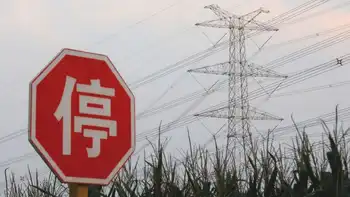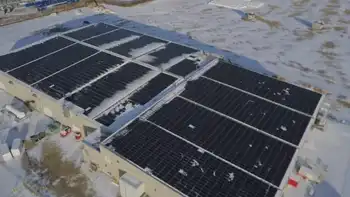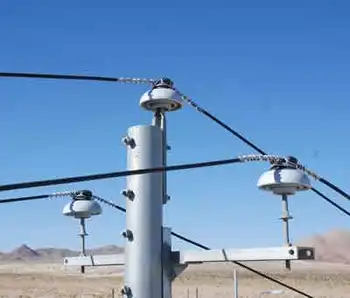Texas is wind king, but Iowa breezes past California
By Associated Press
NFPA 70e Training
Our customized live online or in‑person group training can be delivered to your staff at your location.

- Live Online
- 6 hours Instructor-led
- Group Training Available
The Lone Star state's 7,118 megawatts dwarfs Iowa's 2,791 megawatts and California's 2,517 megawatts, but wind power has grown into a key part of the energy infrastructure in Minnesota and Iowa, where each state generates more than 7 percent of their electricity from turbines, the American Wind Energy Association study said.
States are trying to lure wind energy companies and the jobs that come with them, especially with new federal requirements that will require more power from alternative sources in coming years.
While jobs in the wind industry jumped by 70 percent to 85,000 last year, the association's chief executive warned that more must be done to prevent the industry from stalling.
"We need the right policies in place for our industry to maintain its momentum," said Denise Bode in a release.
The passage of a national Renewable Electricity Standard that would require utilities to generate a quarter of their electricity from renewable energy by 2025 is vital to long-term growth, said Bode.
Global investment in alternative energy was cut in half during the first quarter of 2009, according to one study. Billions in investments have vanished with the recession.
Shares in wind, solar and geothermal companies took a pummeling from investors this year. Investments in companies devoted solely to clean energy fell to about $100 million from $2.1 billion, according to New Energy Finance, an industry-research firm.
Still, 2008 was a big year for the industry.
U.S. wind farms, with a combined capacity of 25,300 megawatts at the end of last year, should be able to generate some 73 billion kilowatt hours of power in 2009, enough to serve nearly 7 million homes, the association said.
The association estimates that 10 new manufacturing facilities started up in 2008, while 17 were expanded and 30 new plants were announced.
Indiana added its first utility-scale wind project. Michigan, Utah, New Hampshire and Wisconsin grew at the fastest clip.
Still, big wind power states added the most capacity by far, led by Texas with 2671.3 new megawatts and Iowa with 1599.8 megawatts. Minnesota, Kansas and New York added between 400 and 455 megawatts each.
FPL Group Inc. subsidiary NextEra Energy Resources continues to dominate the landscape with ownership of about 25 percent of the total installed U.S. wind projects, totaling 6,290 megawatts. Iberdrola Renewables, MidAmerican Energy and Horizon-Energia de Portugal combine for the next 25 percent.
GE Energy installed the most turbines in 2008, accounting for 43 percent of new capacity. Vestas, 13 percent; Siemens and Suzlon, 9 percent each; and Gamesa, 7 percent, rounded out the Top 5.











